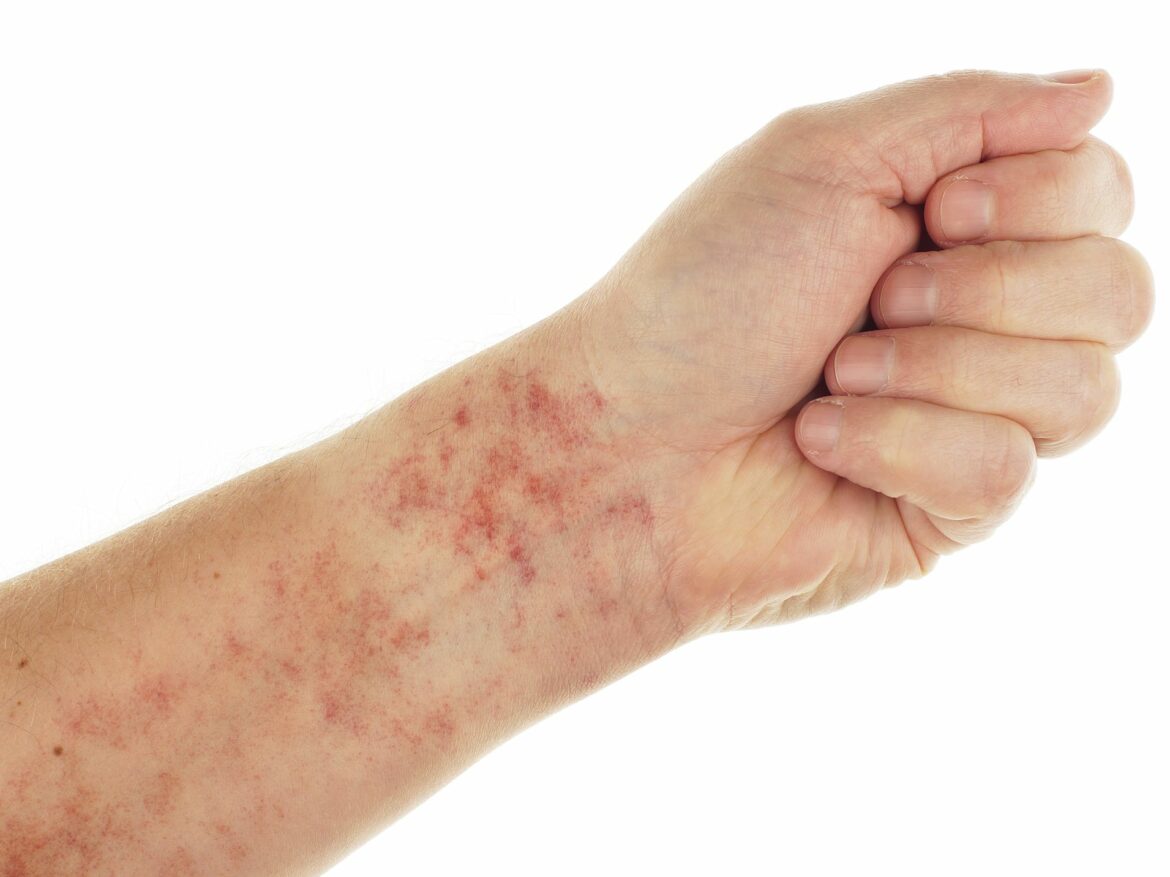
HOME REMEDIES FOR IMMUNE THROMBOCYTOPENIA PURPURA
- August 17, 2021
- Posted by Dr. Vaidya Karanvir Singh
- 0 Comment(s)
Table of Contents
DESCRIPTION
Thrombocytopenia means decreased platelets numbers in the blood. Purpura refers to the purple discoloring of the skin with a bruise means it is a blood disorder which is characterized by decrease in the number of platelets in the blood. Platelets are cells that help to stop bleeding. Decreased platelets count can cause bruising, bleeding gums, and internal bleeding. This is auto immune-disease caused by an immune reaction against our own platelets.
TYPES
1. Acute thrombocytopenic purpura
- This usually affects children ages 2 to 6 years old.
- It is the most common type of ITP.
- The symptoms may be viral illness such as chickenpox.
- Acute thrombocytopenic purpura – it usually starts suddenly and the symptoms disappear less than 6 months or within a few weeks.
- Treatment is often not needed. This disorder usually does not recur.
2. Chronic thrombocytopenic purpura
- This can occur at any age the symptoms lasts for several years or lifetime.
- Adults affects more in this type of ITP often than children, but it does affect adolescent’s people too.
- Females have more prone than males.
- Chronic ITP can recur and it requires continual follow-up.
CAUSES
- Immune thrombocytopenia purpura occurs when immune system cells produce antibodies against platelets.
- Platelets help in blood clot by aggumentated together to plug small holes in damaged blood vessels.
- The antibodies attach to the platelets and body destroys the platelets carrying antibodies.
- In children this disease follows a viral infection.
- In adults it can occur after viral infection or use of certain drugs.
- ITP affects women more often than men.
- It is more common in children than adults. In children this disease may affects boys and girls equally.
SYMPTOMS
The common symptoms of ITP are:
- Bruising easily
- Pinpoint-sized petechiae, often on the lower legs
- Spontaneous nosebleeds
- Bleeding from the gums
- Blood in the urine
- Blood in the stool
- Abnormally heavy menstruation
- Prolonged bleeding from cuts
- Profuse bleeding during surgery
HOME REMEDIES FOR ITP
- Food – it can include vitamin B-12, folate, vitamin C and iron rich food that increase blood platelet counts. Diet rich with this can help the body to make and maintain platelets in blood. Vitamin A rich foods is essential for a healthy platelet production. This nutrient also be significant for protein formation in the body. Healthy protein in the body helps in the process of cell division and growth. Some of the foods that you should add to daily diet may include carrot, pumpkin, and sweet potatoes.
- Folate rich foods – folate deficiency in the body may lead to lower blood platelet count consume more vitamin B9 or folate rich foods important for healthy cell division in the body that can increase blood platelet count. Include more orange juice, spinach, asparagus and leafy greens in daily diet.
- Food load up on vitamin K – Foods used to increase blood platelets include vitamin K. This nutrient is important to ensure a healthy growth of cells at an optimum level. Eating kale, eggs, green leafy vegetables, liver, meat, cabbage etc., will help to increase blood platelet count.
- Vitamin B-12 – Vitamin B-12 help to keep blood cells healthy and its deficiency has been associated with low platelet counts. Vitamin B-12 found in eggs, milk, cheese, etc.
- Iron – Iron promote the production of healthy cells in the body. It is best for the people with anemia. Include iron rich diet such as pumpkin seeds, pomegranate, lentils and green leafy vegetable in diet to load up iron.
- Vitamin C rich food – Vitamin C help platelet to their proper functioning. It also absorb iron that contributes to increasing blood platelets counts. Add mangoes, broccoli, pineapple, tomatoes, cauliflower, and amla increase count gradually.
- Wheat grass – wheat grass help to elevate blood platelet count. Drinking a cup of wheat grass along with a drop of lemon juice may increase blood platelet naturally.
- Papaya leaves – It is rich in antioxidant and contain compounds like flavonoids, alkaloids, saponins, carpaine, anthraquinone, carposide, & tannins. Papaya leaves help in stabilizing the red blood cells. It also help to maintain the immune system of an individual that helps in increasing the blood platelet count naturally.
- Beetroot – it helps in preventing free radicals accumulation and maintain the number of platelet count naturally. It also controlling all signs & symptoms related to ITP patients.
- Spinach – it is rich in vitamin K that helps in preventing blood loss in ITP patients. It improve platelets count naturally. This herb is very effective and provides long lasting results to raised platelets count.

Dr. Vaidya Karanvir Singh is the younger Vaidya in Chandigarh Ayurved & Panchakarma Centre. He is the fourth generation in his family who is practicing as a general consultant in Ayurved & Panchakarma treatment at Chandigarh. In his practice, he had treated more than 1 Lakh Plus patients worldwide.

